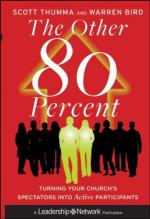in Battel, he tells us, that the Brims of it were
encompassed by Terror, Rout, Discord, Fury, Pursuit,
Massacre, and Death. In the same Figure of speaking,
he represents Victory as following Diomedes; Discord
as the Mother of Funerals and Mourning; Venus as dressed
by the Graces; Bellona as wearing Terror and Consternation
like a Garment. I might give several other Instances
out of Homer, as well as a great many out of Virgil.
Milton has likewise very often made use of the same
way of Speaking, as where he tells us, that Victory
sat on the right Hand of the Messiah when he marched
forth against the Rebel Angels; that at the rising
of the Sun the Hours unbarrd the Gates of Light; that
Discord was the Daughter of Sin. Of the same
nature are those Expressions, where describing the
singing of the Nightingale, he adds, Silence was pleased;
and upon the Messiahs bidding Peace to the Chaos,
Confusion heard his Voice. I might add innumerable
Instances of our Poets writing in this beautiful Figure.
It is plain that these I have mentioned, in which
Persons of an imaginary Nature are introduced, are
such short Allegories as are not designed to be taken
in the literal Sense, but only to convey particular
Circumstances to the Reader after an unusual and entertaining
Manner. But when such Persons are introduced
as principal Actors, and engaged in a Series of Adventures,
they take too much upon them, and are by no means
proper for an Heroick Poem, which ought to appear credible
in its principal Parts. I cannot forbear therefore
thinking that Sin and Death are as improper Agents
in a Work of this nature, as Strength and Necessity
in one of the Tragedies of Eschylus, who represented
those two Persons nailing down Prometheus to a Rock,
[5] for which he has been justly censured by the greatest
Criticks. I do not know any imaginary Person
made use of in a more sublime manner of thinking than
that in one of the Prophets, who describing God as
descending from Heaven, and visiting the Sins of Mankind,
adds that dreadful Circumstance, Before him went the
Pestilence. [6] It is certain this imaginary Person
might have been described in all her purple Spots.
The Fever might have marched before her, Pain might
have stood at her right Hand, Phrenzy on her Left,
and Death in her Rear. She might have been introduced
as gliding down from the Tail of a Comet, or darted
upon the Earth in a Flash of Lightning: She might
have tainted the Atmosphere with her Breath; the very
glaring of her Eyes might have scattered Infection.
But I believe every Reader will think, that in such
sublime Writings the mentioning of her as it is done
in Scripture, has something in it more just, as well
as great, than all that the most fanciful Poet could
have bestowed upon her in the Richness of his Imagination.
L.
[Footnote 1:
Reddere personae scit convenientia cuique.
Hor.]
[Footnote 2: Revelation vi. 8.]




